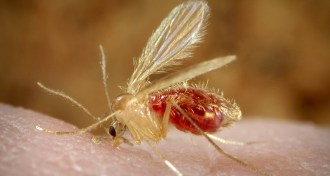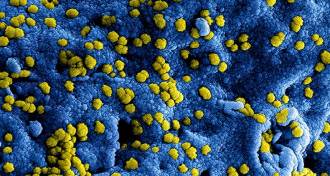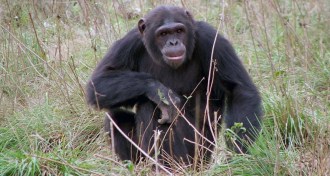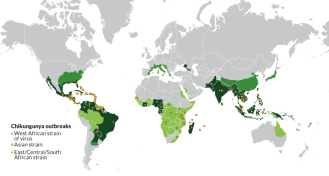Humans
Sign up for our newsletter
We summarize the week's scientific breakthroughs every Thursday.
-
 Health & Medicine
Health & MedicineFly spit protein holds back parasite infection in monkeys
A protein called PdS15 found in the saliva of the sand fly that spreads leishmaniasis may be used in a vaccine to combat the parasitic scourge causing the illness.
-
 Health & Medicine
Health & MedicineDeadly MERS spreads in small cluster in South Korea
Thirty people have MERS virus in the South Korean outbreak, including China’s first case.
-
 Health & Medicine
Health & MedicineAn antidepressant may protect against Ebola
Zoloft and a heart drug keep most mice alive after exposure to Ebola.
By Nathan Seppa -

-
 Health & Medicine
Health & MedicineWhy breast-feeding really can be easier the second time around
The body remembers how to make milk, a mouse study suggests. Something similar may happen in humans.
-
 Anthropology
AnthropologyChimps prefer roasted potatoes, hinting at origins of cooking
Chimps really dig roasted potatoes, suggesting cooking arose millions of years ago.
By Bruce Bower -
 Health & Medicine
Health & MedicineChikungunya is on the move
The chikungunya virus, which wreaks havoc on joints, has spread via mosquitoes in tropical regions. Now it has found a way to hijack a second mosquito, posing a threat to people in Europe, North America and China.
By Nathan Seppa -
 Humans
HumansHow Homo sapiens became world’s dominant species
'First Peoples' dispels old ideas about human evolution and tells an updated tale of how Homo sapiens came to dominate the world.
By Erin Wayman -
 Science & Society
Science & SocietyAttempt to shame journalists with chocolate study is shameful
Journalist John Bohannon set out to expose poor media coverage of nutrition studies. In the process, he lied to his own profession and the public.
-
 Health & Medicine
Health & MedicineMice become thin-skinned in space
Long trips in space may thin the skin.
By Meghan Rosen -
 Health & Medicine
Health & MedicineMice grow a thinner skin during long stays in space
Mice that spent three months in space had thinner skin and extra hair growth compared with rodents that were grounded on Earth.
By Meghan Rosen -
 Health & Medicine
Health & MedicineOne in 10 people with tattoos experience rashes, scarring or other problems
Tattoos carry risk of long-term rash; red ink may be most irritating color.
By Meghan Rosen